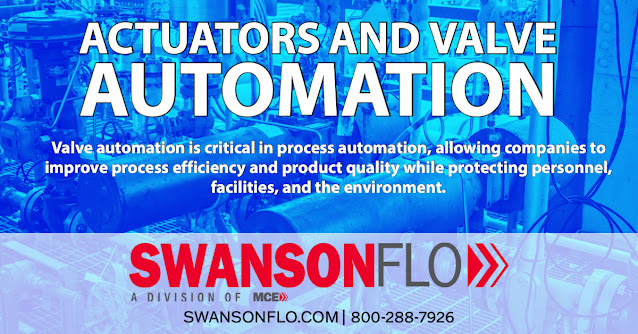Industrial valves manage flow in pipelines and industrial facilities. The valve acts as a tap, controlling the pipeline flow by opening or shutting it. Automation of a valve involves installing an actuator and control system. Powering actuators may be done by hand, electricity, pneumatics, or hydraulic. Automating valves is beneficial for flow management in pipe systems that need precise control or fail-safe emergency cutoff. Improved output control through automated valves contributes to cost savings associated with product waste. Automated valves operate in all industrial settings, including wastewater treatment facilities, power plants, mines, nuclear operations, food and beverage companies, refineries, and pipelines.
Actuated valves contribute to operator safety by enabling constant operating levels and ensuring safety in areas where high temperatures, pressure levels, unpleasant or dangerous odors, combustible materials, or other conditions might result in catastrophic failures. In an emergency, automatic valve actuators return to their fail-safe settings, avoiding accidents, environment pollution, equipment or building damage, and other devastating outcomes.
Additionally, automated valves enable remote access to valves that are difficult or impossible to reach securely to restore them to a safe position manually.
TYPES OF VALVE ACTUATORS
Manual valves are manipulated by hand, utilizing handwheels, levers, and gears. Although less costly and easier to use than other solutions, this isn't always practical or desirable. Larger valves need tremendous force to operate manually, and some are in isolated or dangerous locations. It might also be a safety hazard if the valve has to be closed quickly.
Pneumatic valve actuators get their power from air pressure or another gas. Their simple design requires less maintenance and is a good fit in temperature extremes situations.
Hydraulic actuators, like pneumatic actuators, translate fluid pressure into motion. In this case, the motive force comes from hydraulic fluids. They can generate forces larger than a pneumatic actuator of the same size. In some instances, the process fluid itself might supply the hydraulic pressure.
The electric actuator uses motor torque to activate the valve. Electric actuators are also silent, non-toxic, and energy-efficient. Their opening and closing times are relatively slow and unsuitable for high-speed position change applications.
Valve automation has made significant strides in recent years, with the addition of application-specific standards, certifications, safety integrity level (SIL), and digital protocols. Intelligent and digital valve positioners now include a digital communication protocol and advanced capabilities. Advances in device diagnostics are critical because they enable the move from conventional corrective and scheduled maintenance to predictive maintenance. Diagnostics using valve positioners are becoming more complex, allowing for the testing of valves to identify whether maintenance or replacement is necessary.
Valve actuators are essential in process automation. Valve automation enables firms of all types to continuously increase process efficiency and product quality while ensuring the safety of employees, facilities, and the environment. The current generation of valve automation technology allows industrial enterprises to conduct additional diagnostics on-site and better understand overall valve performance at a lower cost. Automated valve applications must include oversite by a competent and experienced valve professional who can advise on the best technology and crucial installation techniques for optimal results.
For more information, or to discuss your valve automation requirement, contact:

